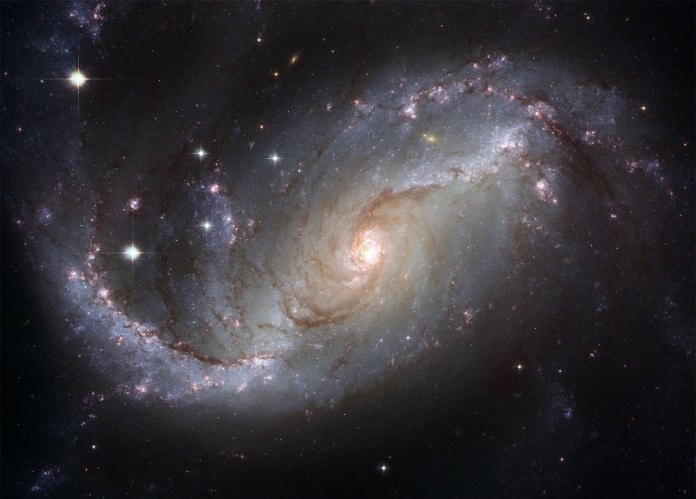How can astronomy be made a deaf-friendly career path? How can we encourage deaf students into the subject?
Just imagine being a scientist who has to text or (if their colleague understands it) fingerspell every star, planet and comet they are discussing with hearing colleagues.
The problem with astronomy in particular is that hundreds of new stars, planets and constellations are being discovered and creating signs for them all is a gigantic task that puts deaf astronomers at a disadvantage.
Astrophysicist Dr Olja Panic, from the University of Leeds, has teamed up with Sign experts to create 50 new astronomy signs as BSL only has c.100 basic ones.
Dr Panic said:
“When it comes to astrophysics and other areas of science, the deaf community face considerable challenges because the language that would allow them to explore and discuss astrophysics is not there.
It is important that science is accessible, and the new signs will allow scientists like myself to give talks, lectures and workshops through which, with the help of a sign language interpreter, I could share my research.”
The Royal Society provided funds. Their chair of the public engagement committee, Professor Carlos Frenk FRS, said:
“This innovative and exciting project will not only help members of the deaf community to deepen their own scientific knowledge but will allow them also to share their experiences with researchers. This project is a great example of how to put into practice one of our key strategic priorities: to demonstrate the importance of science to everyone.”
Derek Rowley is the co-ordinator for the British Deaf Astronomical Association and helped create the new signs:
“There are increasing numbers of deaf people who have either a professional or amateur interest in astronomy. It is important that sign language develops so people can join in the important scientific discussions about the origins of the universe. Ensuring sign language keeps up with the advances in science will also ensure that deaf people can be part of the scientific research community. It will also excite people about the wonder of astronomy.”
In December 2017, the International Astronomical Union published the Encyclopaedic Dictionary of Astronomy for Sign Languages: https://docs.google.com/spreadsheets/d/1bVaZVIx9tFzH6KFo0GPqlzkWwXwXR8Ye_Yr0kwQ2b2w/edit#gid=0
This was to standardise the world’s different astronomical signs. Astrophysicist Dominique Proust said:
“A universal sign language is gradually being developed, mainly to designate objects and situations related to contemporary technology or events. Nevertheless, there will always be differences between signs in each country that need to be noted, as countries have developed…signs through time.”
John Goodricke
The Deaf Astronomer John Goodricke (1764-86) lost his hearing before learning to speak. When he was seven, he went to the first British Deaf school, the Thomas Braidwood academy for the Deaf and Dumb in Edinburgh (another notable pupil was Jane Poole, the first person to legally fingerspell their will).
He then went to the Warrington Academy where we know from his notebooks that he was stargazing at 15.
In 1783, he became the youngest person to ever win the Copley Medal for his work on vibrating stars (those with rapidly changing brightness). He found that not all variable stars caused the changes in brightness themselves.
He discovered the first eclipsing variable star (one eclipsed by another star moving in front) on November 12, 1782:
“I looked at Beta Persei [Algol], and was much amazed to find its brightness altered… I observed it diligently for about an hour – I hardly believed that it changed its brightness because I never heard of any star varying so quickly in its brightness.”
The star he studied had been called the Winking Demon but Goodricke named it Algol. Him and his colleague Edward Pigott worked out that Algol was dimming every 2.767 days.
He presented his discovery to the Royal Society who invited him to become a Fellow. Tragically, he died a fortnight later.
Vibrating Universe
Dr Mario De Leo-Winkler is an astrophysicist who organises workshops to get deaf children interested in the stars.
In 2019, he co-authored The Vibrating Universe: Astronomy for the Deaf in the Journal of Science Education and Technology. He explained what barriers deaf children can face:
“The Deaf have often been overlooked when designing informal STEM education and public outreach activities. Astronomers at UC Riverside and teachers at the California School for the Deaf, Riverside (CSDR), have designed an astronomy workshop aimed specifically for the Deaf using the school’s on-site sound lab.”
He chose astronomy because it is a more visual subject than other sciences. He found that students’ enthusiasm grew because it wasn’t their usual activity.
He described the technology they used to make the experience deaf-friendly:
“Our workshop uses electromagnetic emissions, enhanced sounds and sonification processes of cosmic phenomena that have low frequencies and sufficiently distinguishable patterns which are delivered to students through a specialized designed sound lab for the Deaf. Storytelling paired with videos and images are used to give understandable meaning to the sounds of the Universe.
…Our novel STEM education activity uses vibrations as the medium to transmit the sounds produced by cosmic phenomena, following a series of medical papers that suggest the brain of deaf individuals undergoes neural reorganization to process vibrations in the absence of sound.”
The floor of the lab has eight interlocking panels above foam blocks that vibrate with the sounds. It also uses loudspeakers, a TV, a laser, light tower and speech analyzer.
The children sat on the floor watching the TV while being taken on a virtual rocket tour of Alpha Centauri, dwarf stars and the Large Magellanic Cloud.
Dr Leo-Winkler pointed out that there were dozens of similar vibrating sound labs all over the world that could be used. He despaired at the lack of astrophysical signs:
“Sign language (other than fingerspelling) for most astrophysical phenomena is mostly non-existent.”
He lamented that despite the huge demand for scientists, 37% of disabled scientists and engineers were unemployed compared to 15% for the rest. Even those with a job earn 7.5% less than their non-disabled colleagues.









